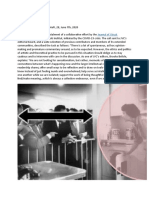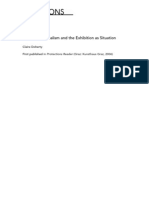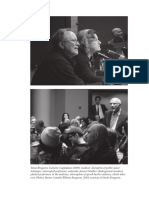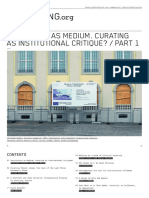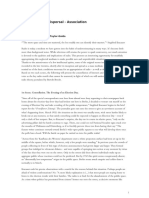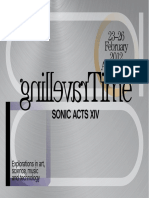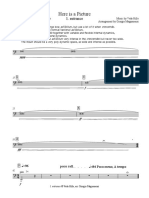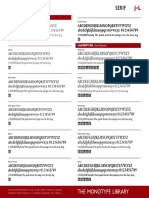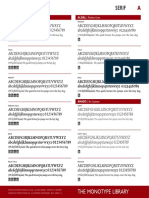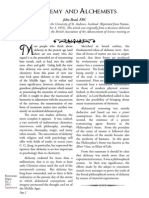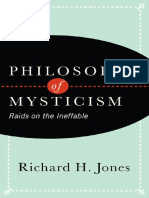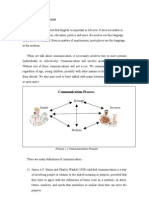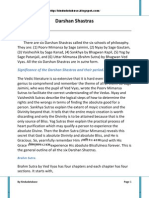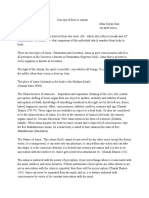10 2004
The Artist as Public Intellectual
Simon Sheikh
A central issue for critical artists today is the question of interactions with the apparatus surrounding art
production: the parameters for reception (institutions, audiences, communities, constituencies, etc.) and the
potentials and limitations for communication in different spheres (the art world, the media, public spaces, the
political field etc.). How connections are made and how they are, indeed, broken. This can be discussed in a
number of ways, ranging from the practical and methodological, that is, discussions regarding the use of signs
and spaces in installation, about conceptions of tools and politics of representation, the role or function of the
artist/author in the construction of other spaces and subjectivities, that is alternative networks or even
counter-publics. Such discussions must focus not only on the interface between the institution of art and the
individual artist, both politically and artistically, but also on bodily relations in political spaces, the advent and
usage of technologies, and finally the establishment of networks, communication lines and escape attempts.
The artist as a producer is thus dependent on the apparatus through which he or she is threaded, through
specific, historically contingent modes of address and reception. The artist is, in other words, a specific public
figure that can naturally be conceived in different ways, but which is simultaneously always already placed or
situated in a specific society, given a specific function. This was, of course, what Michel Foucault was driving
at when he wrote of "the author-function" in his essay "What is an Author?".[1] "What is an Author?" is an
institutional and epistemological analysis of the figure of the author, which can be read as a problematization
of both Walter Benjamin's politically motivated imagining of the author as producer, as well as Roland
Barthes' equally polemic and instructive essay "The Death of the Author".[2] Rather than eliminating or
transforming the author, Foucault wants to suspend or bracket the author as a specific function, invention and
intervention (with)in discourse:
We should suspend the typical questions: how does a free subject [such as an author or artist, supposedly]
penetrate the density of things and endow them with meaning; how does it accomplish its design by
animating the rules of discourse from within? Rather, we should ask: under what conditions and through
which forms can an entity like the subject appear in the order of discourse; what position does it occupy; what
functions does it exhibit; and what rules does it follow in each type of discourse? In short, the subject (and its
substitutes) must be stripped of its creative role and analysed as a complex and variable function of
discourse.[3]
According to Foucault the author-function is a measure that differentiates and classifies the text or work,
which has both legal and cultural ramifications. This also means that any potential reconfigurations of that
function require a reconfiguration of discursive institutions surrounding it. In this both Benjamin's notion of
the author as a politically involved figure questioning relations of production in modern industrial society,
a.k.a. fordism, and Barthes' post-industrial call to arms, where the death of the author should lead to the birth
of the reader, which is a radically different notion of activating the public and presumably deepening
democracy, are, in effect, attempts at reconfiguring the function of the author. This reconfiguration of the
author/artist function was to take place through new modes of address, which would in turn configure new
modes of receivership or spectatorship in the sense that a mode of address is always an imaginary stranger
relationality, an attempt at developing an audience, constituency or community. So if we are to understand the
artist as a public intellectual, we also have to understand how this potential public is constructed and
reconfigured through the historical and contingent placing or function of the artist, through his or her
specific public sphere, which is also termed the apparatus through which the artist is threaded.
Now the classical conception of the artist, or the public intellectual, as an Enlightenment figure in a bourgeois
1
�public sphere seems less and less up to date and purely historical. The notion of the bourgeois public sphere as
a space to be entered with equal rights and opportunities as rational-critical subjects, which has always been a
projection of course, is also an increasingly receding horizon today. There no longer is "a" public, but rather
either no public at all (as understood as free exchange), or a number of fragmented, particular publics. The
enlightenment model of the west, which was tolerant, to some extent, of avant-garde art, of representing
values other than bourgeois values of conduct, order and productivity, has now been superseded by a more
thoroughly commercial mode of communication, by a cultural industry. Where the Enlightenment model
tried to educate and situate its audience through discipline, through various display models identifying
subjects as spectators, the cultural industry institutes a different communicative model of exchange and
interaction through the commodity form, in turn identifying subjects as consumers. For the cultural industry,
the notion of "the public", with its contingent modes of access and articulation, is replaced by the notion of
"the market", implying commodity-exchange and consumption as modes of access and interaction. This also
means that the idea of the Enlightenment, rational-critical subjects and a disciplinary social order, is replaced
by the notion of entertainment as communication, as the mechanism of social control and producer of
subjectivity. The classic bourgeois spaces of representation are likewise either replaced by markets, such as the
mall replacing the public square, or transformed into a space of consumption and entertainment, as is the case
in the current museum industry. Similarly, the former communist public sphere, which was no public sphere
as such, but a matter between state and party, has been replaced not by the former citizen-model of the west,
but by the market/consumer-group formation as just described.
As such, we then also have to reconfigure the role of the public intellectual as a rational-critical subject, a
universal subject, not as a thoroughly particular subject, which - as I see it - would only be an affirmation of
the consumer-group model, but rather as an involved instead of detached figure: at the same time as
Benjamin's thesis dealing with the mode of address, Antonio Gramsci was defining a different model of the
intellectual, the so-called "organic" intellectual, which was a figure that was involved not only in struggles, in
causes, but also in production itself.[4] According to Gramsci all men were intellectuals, although not
everyone had that role (the potential of mass intellectuality), a role that had to do with involvement,
organizing and movements. As such, marketing and advertising men as well as journalists were the new
organic intellectuals of capitalism, whereas teachers and priests could not be considered organic intellectuals,
since they were repetitive. Today, precarious workers could certainly be considered this kind of intellectual,
although it remains to be discussed whether they are in the service of capital or the cultural industry or in its
counter-movement, a struggle for the multitude. We must therefore begin to think of artists and intellectuals
as not only engaged in the public, but as producing a public through the mode of address and the
establishment of platforms or counter publics, something that has already existed in both the east and west,
clandestinely and underground respectively, but in opposition to the reigning cultural and political hegemony
of the specific society.
Counter-publics can be understood as particular parallel formations of a minor or even subordinate character
where other or oppositional discourses and practices can be formulated and circulated. Where the classic
bourgeois notion of the public sphere claimed universality and rationality, counter-publics often claim the
opposite, and in concrete terms often entail a reversal of existing spaces into other identities and practices,
most famously as in the employment of public parks as cruising areas in gay culture. Here, the architectural
framework, set up for certain types of behaviour, remains unchanged, whereas the usage of this framework is
drastically altered: private acts are performed in public.
According to Michael Warner, counter-publics have many of the same characteristics as normative or
dominant publics - existing as an imaginary address, a specific discourse and/or location, and involving
circularity and reflexivity - and are therefore always already as much relational as they are oppositional. In recent
art history the notion of "self-organization", for example, is most often an oppositional term, and certainly a
credible one, but it is not itself a counter-public. Indeed, self-organization is a distinction of any public
formation: it constructs and posits itself as a public through its specific mode of address. Rather, the
2
�counter-public is a conscious mirroring of the modalities and institutions of the normative public, but in
effort to address other subjects and indeed other imaginaries:
Counterpublics are "counter" [only] to the extent that they try to supply different ways of imagining stranger
sociability and its reflexivity; as publics, they remain oriented to stranger circulation in a way that is not just
strategic but constitutive of membership and its affects. [5]
Of particular interest here, is not only the transformation of "bourgeois" art institutions by particular agents,
but also the current movement of wilful self-institutionalization seen in such art related platforms as 16 Beaver
group in New York, b_books in Berlin, Center for Land Use Interpretation in Los Angeles, Center for Urban
Pedagogy in New York, Copenhagen Free University, Community Art School in Zagreb, Institute of Applied
Autonomy in Boston, The Invisible Academy in Bangkok, School of Missing Studies in NY, Belgrade and
Amsterdam, University of Openess in London and Université Tangente in Paris, that all somewhat mirror and
reverse educational facilities. Here discourses are established and circulated not through a negation of
publicness, but through a deliberate and tactical self-institutionalization. Societal machines for knowledge
production become subjective ones - produced through identity rather than producing identity. As stated by
one of these self-institutions:
Copenhagen Free University is one voice in a mumble of voices. We are not two or three individuals, we are
an institution drifting through various social relations, in the process of being produced and producing. We
are the people in the house. This position establishes an ever-changing formation of new contexts, platforms,
voices, actions but also by inactivity, refusals, evacuations, withdrawals, exodus. According to the situationist
Asger Jorn, subjectivity is a point of view inside matter, "a sphere of interest", and not necessarily that, which
is equitable with the individualized ego. [...] Copenhagen Free University is a "sphere of interest" arising from
the material life we experience and will always be politicized before any citizenship. Our scope is both local and
global, looking for fellow travellers around the corner and around the world. [6]
We are dealing here with a notion of the everyday, with an attempt to deal with living conditions within the
knowledge economy of the post-fordist world, a tactic of double movement, both contestation and
withdrawal. We can also describe this movement as a politics of everyday life, rather than of representations,
deliberations and/or aggregates. This entails, then, a different notion of "the political" that is not only about
movement, but also moment, the here and now, as in the words of another author-producer Stephan Geene:
What b_books is up to, according to my point of view (although this is not very consensual in the group), is
to maintain a specific kind of "option" for "the political", an option that is explicitly not utopian in any way.
the option is based on the premise that the political does not mean to work for a defined political aim + that it
has nothing to do with sacrificing one's own (life)time, but rather investing in the "machine" that generates
"one's own life" in a political process. [7]
Let me also offer another definition along the lines of counter-publics: what is at stake here is the articulation
of experience. It is assemblage rather than performance. Where the institutions of the cultural industry only
offer endless "new experiences", the production of self-institutionalized bodies notably tends to appear boring,
unspectacular in the organizing of experience.
In these times of an expansive global capitalism, corporatization of culture and criminalization of the critical
left, it is not only appropriate, but indeed crucial to discuss and assess modes of critique, participation and
resistance in the charged field between the cultural field and the political sphere. Or in other words, the
charged field between political representation and representational politics, between presentation and
participation. It is our firm belief that the cultural field is a usable tool for creating political platforms and new
political formations rather than a primary platform in itself; that art matters, or at least should matter and not
only be a playground for self expression and/or analysis. However, such a project requires thinking, analysis
3
�and, not least of all, a consideration of what these terms, politics and culture, implicate in the current
situation. First of all, it is obvious that both arenas have been pluralized and fragmented, if not dispersed and
dissolved throughout the current postmodern era. We can no longer talk of homogeneous categories in the
singular, but rather of several political spheres and several cultural fields that sometimes connect and/or
overlap and sometimes strives towards autonomy and/or isolation. Both arenas imply a large subdivision of
networks, agents and institutions.
In Western welfare states the cultural field has traditionally been seen as ideally autonomous from the political
sphere, and has thus been structured, financed and institutionalized as a separate entity, something apart from
the political as an independent public sphere. Strangely, it is also this relative autonomy that has supplied the
cultural field with its potential for political critique and discussion - that it has been removed from direct
political representation and control, allowing for a different production of knowledge and reflexive processes.
Unfortunately, it is also this relative autonomy that has led to a de-politicization of cultural production and
the configuration of the art world as an elitist, exclusive club. However, with the current neoliberal onslaught
throughout the West, culture is increasingly being privatized and corporatized, both in terms of funding and
production. Corporate culture creates dominant imagings and subjectivities rather than so-called alternative or
counter-culture. And neoliberalism is now aligning itself seamlessly with the current wave of European
"velvet" fascism in democratically elected governments in Austria, Denmark, Holland and so on, leading to a
vilification of left-wing intellectualism and political activism, in some instances even criminalizing activists in
the wake of 9-11.
This current state of affairs, in both the cultural field and the political sphere, leads to a possible radicalization
rather than a mainstreaming of critical practices within art and activism, sometimes strategically and
sometimes involuntary. It is a struggle on two fronts, directed both towards the current political mainstream
and inwards in the making of political identities and platforms: What can we do for ourselves? Such an
endeavour, however, certainly requires more rather than less thinking about notions of culture and politics,
but also about identity constructions, notions of locality or, if you will, the mediating between particularity
and universality, public spaces and activist strategies, networks and constituencies. In the creation of
equivalence and translation, we can learn from AIDS activism as suggested by artist/activist Gregg Bordowich:
MEDICINE INTO MY BODY NOW. It requires an ongoing negotiation, translation and articulation
between interested agents and groups. It is necessary to establish networks, to compare and mediate practices
as well as theories. Art matters, certainly, but art is not enough.
[1] Michel Foucault, "What is an Author?", 1969, reprinted in Language, Counter-Memory, Practice, Cornell
University Press: Ithaca, New York, 1977, pp. 113-138.
[2] Walter Benjamin, "The Author as Producer", 1934, reprinted in Reflections, Harcourt Brace Joanovich:
New York, 1978, pp. 220-238. Roland Barthes, "The Death of the Author", 1967, reprinted in
Image-Music-Text, Hill & Wang: New York, 1977, pp.142-148.
[3] Foucault, op.cit., p.137-8.
[4] Antonio Gramsci, "Intellectuals" Prison Notebooks Q 12, 1932, reprinted in The Antonio Gramsci Reader,
Lawrence and Wishart: London, 1999, pp.301-311.
[5] Michael Warner, Publics and Counterpublics, New York: Zone Books, 2002, pp. 121-22.
[6] Copenhagen Free University, "All Power to the Copenhagen Free University", in: Katya Sander and Simon
Sheikh (Eds.), We are All Normal (and we want our freedom), Black Dog Publishing: London, 2001, pp.
394-395.
4
�[7] Stephan Geene, "self-portrait of more than me: a group - or its fragments", in: Simon Sheikh (Ed.), In the
Place of the Public Sphere?, oe / b_books: Berlin, 2004, p.215.























